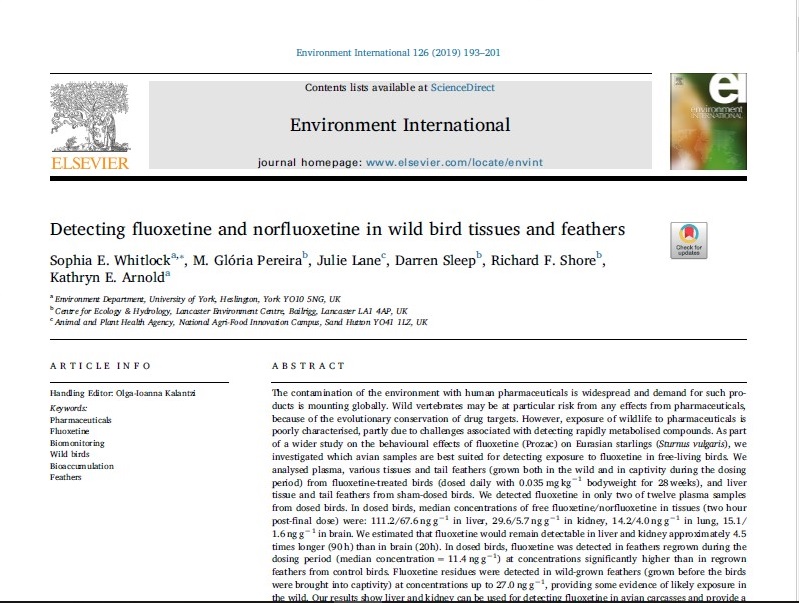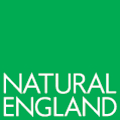Submitted by PBMS Admin on
The release of pharmaceuticals into the environment and subsequent uptake in wildlife is a growing area of concern. Exposure to pharmaceuticals can be difficult to detect. This is because tissue residues of pharmaceuticals are usually metabolised rapidly.
The PBMS team, in collaboration with colleagues at York University, studied how quickly this metabolism might occur and whether exposure can be detected by analysing residues that are fixed and stable in feathers. Fluoxetine (a widely used anti-depressant) was used as a model compound and although the study involved starling, the results may be equally applicable to birds of prey.
The results of the work have been published recently as an open access paper, the full reference for which is: Whitlock, S.E., Pereira, M.G., Lane, J. Sleep, D., Shore, R.F., Arnold, K.E. 2019. Detecting fluoxetine and norfluoxetine in wild bird tissues and feathers. Environment International 126 193-201. doi: 10.1016/j.envint.2019.01.083.
A free download is obtainable here.







